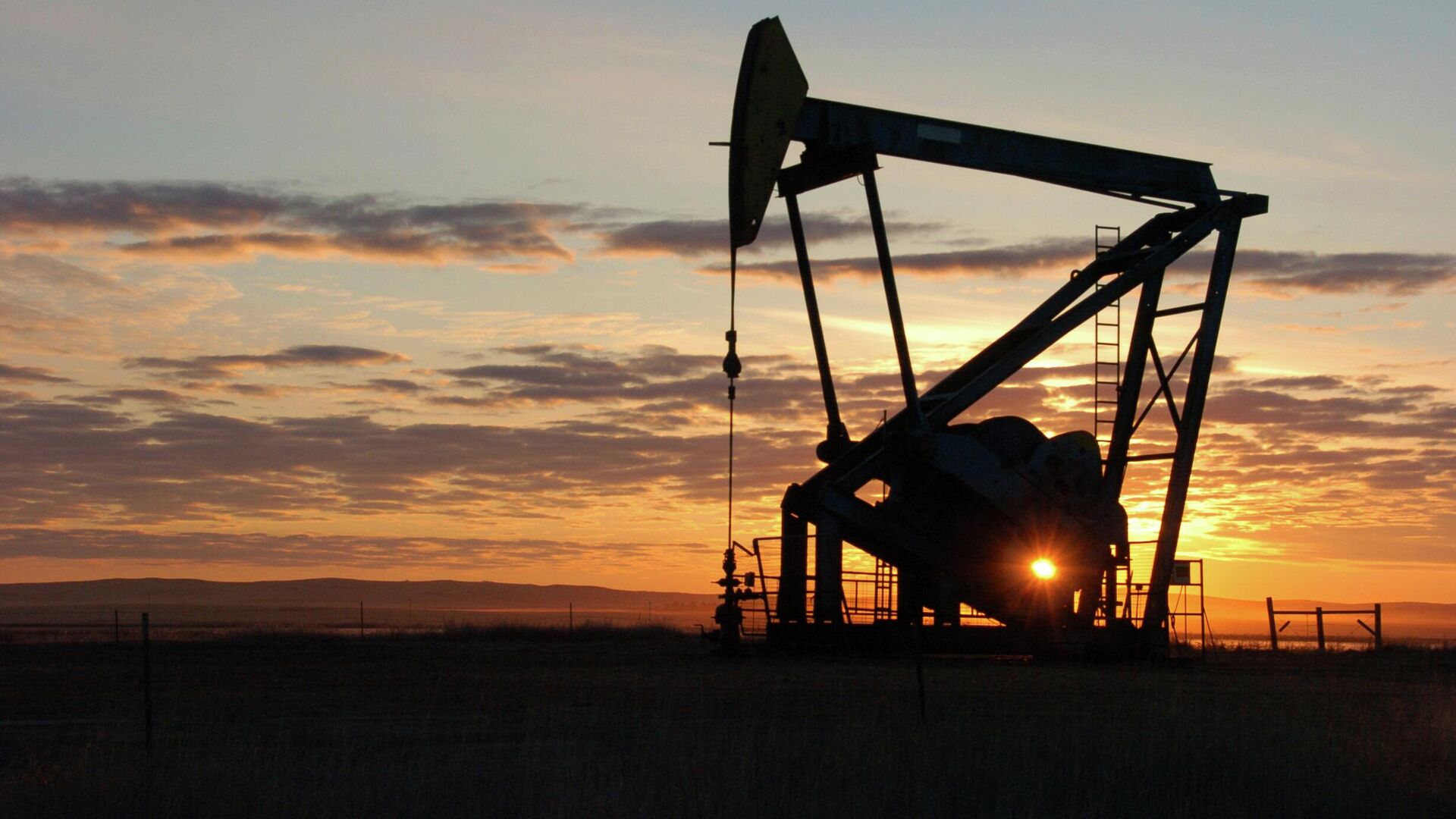https://sputnikglobe.com/20220404/oil-prices-jumps-as-much-as-4-amid-talk-of-more-russia-sanctions-1094482883.html
OIl Prices Jumps as Much as 4% Amid Talk of More Russia Sanctions
OIl Prices Jumps as Much as 4% Amid Talk of More Russia Sanctions
Sputnik International
NEW YORK (Sputnik) - Oil prices jumped as much as 4%, returning US crude to above $100 per barrel, as more Western sanctions planned for Russia along with news... 04.04.2022, Sputnik International
2022-04-04T22:52+0000
2022-04-04T22:52+0000
2023-05-28T15:18+0000
us
business
europe
oil business
market
sanctions
oil
united kingdom (uk)
https://cdn1.img.sputnikglobe.com/img/07e6/04/04/1094482814_0:98:2464:1484_1920x0_80_0_0_22aa77cc03eb20d7c9e073ac3b945a91.jpg
Media reports were inundated with accounts of rising civilian casualties in Ukraine, increasing the pressure on European countries to impose sanctions on Russian energy exports.Saudi Aramco, meanwhile, raised its official selling prices for crude to be sold to all destinations in May, as Riyadh’s state oil firm remained vigilant in maximizing its profit from oil prices at 14-year highs.London-traded Brent, the global oil benchmark, settled up $3.14, or 3%, at $107.53 per barrel on Monday, after a session high at $108.54. Brent fell 13% last week for its biggest weekly decline since April 2020. Even so, it finished the first quarter up 39%.New York-traded US crude benchmark West Texas Intermediate, or WTI, settled up $4.04, or 4%, at $103.28 a barrel, after an intraday high of $103.69. WTI settled below the key $100 support last week as it fell about 13% just like Brent for its worst week since April 2020. It, however, settled the first quarter up 33%.Brent and WTI were down more than 1% each earlier in the session when they reopened from last week’s tumble on news that the United Nations has clinched its first-ever two-month truce between the Saudi-led coalition and Iran-aligned Houthis in the seven-year war over Yemen.Last week’s selloff in oil was triggered by the White House’s announcement that the United States will release up to 1 million barrels daily from its Strategic Petroleum Reserve (SPR) for six months beginning May. The release, the third in the past six months, will serve as a bridge until domestic producers can boost output and bring supply back into balance with demand, President Joe Biden had said.Also weighing on oil prices last week were demand concerns in China, the world's top oil importer, where the most populous city, Shanghai, remained in a COVID-19 lockdown. China's transport ministry said it expects a 20% drop in road traffic and a 55% slowdown in flights during the three-day Qingming holiday due to a flare-up of coronavirus cases.Despite such bearish factors, crude prices rebounded Monday as tight supply concerns returned to the market, analysts said.This was in spite of a report by Quantum Commodity Intelligence that the Paris-based International Energy Agency is likely to release 120 million barrels from the reserves of its non-US members to add to the 180 million barrels announced by the White House.If the IEA release is staggered over six months as well, that would be almost 667,000 barrels per day on top of the 1.0 million from the US SPR -- equating four months’ worth of recent OPEC increments.The reserves release will "create distortions in a market that is already facing tremendous challenges", and make oil buyers pay more in the future, said Phil Flynn, analyst at Chicago-based broker Price Futures Group.
https://sputnikglobe.com/20220401/chickens-have-come-home-to-roost-why-bidens-spr-release-unlikely-to-curb-oil-prices-1094400491.html
united kingdom (uk)
Sputnik International
feedback@sputniknews.com
+74956456601
MIA „Rosiya Segodnya“
2022
Sputnik International
feedback@sputniknews.com
+74956456601
MIA „Rosiya Segodnya“
News
en_EN
Sputnik International
feedback@sputniknews.com
+74956456601
MIA „Rosiya Segodnya“
Sputnik International
feedback@sputniknews.com
+74956456601
MIA „Rosiya Segodnya“
us, business, europe, oil business, market, sanctions, oil, united kingdom (uk)
us, business, europe, oil business, market, sanctions, oil, united kingdom (uk)
OIl Prices Jumps as Much as 4% Amid Talk of More Russia Sanctions
22:52 GMT 04.04.2022 (Updated: 15:18 GMT 28.05.2023) NEW YORK (Sputnik) - Oil prices jumped as much as 4%, returning US crude to above $100 per barrel, as more Western sanctions planned for Russia along with news of a hike in Saudi selling prices helped the market rebound from last week’s worst sell-off in two years.
Media reports were inundated with accounts of rising civilian casualties in Ukraine, increasing the pressure on European countries to impose sanctions on Russian energy exports.
Saudi Aramco, meanwhile, raised its official selling prices for crude to
be sold to all destinations in May, as Riyadh’s state oil firm remained vigilant in maximizing its profit from oil prices at 14-year highs.
London-traded Brent, the global oil benchmark, settled up $3.14, or 3%, at $107.53 per barrel on Monday, after a session high at $108.54. Brent fell 13% last week for its biggest weekly decline since April 2020. Even so, it finished the first quarter up 39%.
New York-traded US crude benchmark West Texas Intermediate, or WTI, settled up $4.04, or 4%, at $103.28 a barrel, after an intraday high of $103.69. WTI settled below the key $100 support last week as it fell about 13% just like Brent for its worst week since April 2020. It, however, settled the first quarter up 33%.
Brent and WTI
were down more than 1% each earlier in the session when they reopened from last week’s tumble on news that the United Nations has clinched its first-ever two-month truce between the Saudi-led coalition and Iran-aligned Houthis in the seven-year war over Yemen.
Last week’s selloff in oil was triggered by the White House’s announcement that the United States will release up to 1 million barrels daily from its Strategic Petroleum Reserve (SPR) for six months beginning May. The release, the third in the past six months, will serve as a bridge until domestic producers can boost output and bring supply
back into balance with demand, President Joe Biden had said.
Also weighing on oil prices last week were demand concerns in China, the world's top oil importer, where the most populous city, Shanghai, remained in a COVID-19 lockdown. China's transport ministry said it expects a 20% drop in road traffic and a 55% slowdown in flights during the three-day Qingming holiday due to a flare-up of coronavirus cases.
Despite such bearish factors, crude prices rebounded Monday as tight supply concerns returned to the market, analysts said. This was in spite of a report by Quantum Commodity Intelligence that the Paris-based International Energy Agency is likely to release 120 million barrels from the reserves of its non-US members to add to the 180 million barrels announced by the White House.
If the IEA release is staggered over six months as well, that would be almost 667,000 barrels per day on top of the 1.0 million from the US SPR -- equating four months’ worth of recent OPEC increments.
The reserves release will "create distortions in a market that is already facing tremendous challenges", and make oil buyers pay more in the future, said Phil Flynn, analyst at Chicago-based broker Price Futures Group. 



